A Midwest broadcasting legend, Omaha's heritage Top 40 station "The Mighty 1290" and "The Rock of the Midwest" signed on the air July 10, 1925.
BIRTH
Originally owned by the Mona Motor Oil Company, a subsidiary of the Monarch Manufacturing Company, the "OIL" in KOIL was therefore a marketing tie-in. Its twin towers were located high on a bluff known as "KOIL Point" in Fairmont Park in Council Bluffs, Iowa. Known as "The Radio Station On The Hill", KOIL was the second station licensed to the Omaha/Council Bluffs area. Initially it broadcast at "278 meters" then 1080 kilocycles before moving to its long-time location of 1290 kilocycles. It originally was a 1,000 watt station that shut down at midnight.. The studio was in a building at Park & Huntington Streets, described as the first in the nation built with the expressed purpose of being a radio station. (It still exists today as a private residence.)
KOIL was the first ABC affiliate west of the Mississippi and the second NBC affiliate west of the Mississippi. It was the first radio station to incorporate an electronic Kilgen pipe organ into its studios. During its peak in live programming, KOIL had two orchestras and reports say it employed over 100 persons at the time.
Mona Oil began faltering through the Depression and was forced to suspend its radio operation. KOIL became a part of the Central States Broadcasting group, headquartered out of Lincoln and owned by the Charles Stuart family. The core of the group were KOIL, KFOR, and KFAB (originally licensed to Lincoln, now in Omaha).
CROSSING THE RIVER
In the summer of 1937, KOIL moved all programming across the Missouri River to Omaha, with studios occupying two floors in the upper ranks of the National Bank Building. KOIL was the creator and producer of "Crime Busters" which was broadcast live, nationally, from its Omaha studios. KOIL sourced all national network feeds from Omaha to the Lincoln network switching center in the basement of the Stuart building. From there, the network feeds were shipped out to its many affiliates.
With an increase in transmitting power and directional requirements, the towers were moved in 1937 to the South Omaha Bridge Road in Council Bluffs. (Today the transmitter "shack" can still be seen as part of a church!) The new transmitting facility was given birth due to the insistence of the ABC radio network. They offered to buy a new 5,000 watt transmitter and phaser for the directional signal if the station would agree to build the facility necessary to broadcast 24 hours.
KOIL apparently had a "warm" place in the heart of Father Edward Flanagan of Boys Town fame. The World Premier of "Boys Town," starring Spencer Tracy and Mickey Rooney, was held in Omaha. During the festivities, a live broadcast was held from Boys Town. For that broadcast, Father Flanagan wanted only ONE microphone on the stage - an RCA 44BX microphone with the KOIL bridge. (A photo of that very microphone is pictured below with Todd Chase.) The networks were very upset because they wanted THEIR mics on stage in front of the Father, but Flanagan ALWAYS got his way. Legend has it that Flanagan simply told the network people, "You can take your signal from KOIL or you can take your equipment and go."
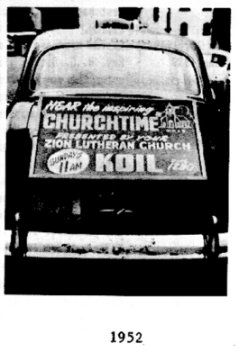

Due to the breakup, the principal staff was given their choice of which station they wanted to stay with. (Lyell Bremser elected to go with KFAB, a fortunate choice for the great history of KFAB and Husker sportscasting.)
The Union Holding Company began to have serious financial problems because none of the primary advertisers in Omaha would advertise on KOIL -- they felt the money was being sent out of town and put into the pockets of the owners. The owners then brought in an extremely talented sales and promotion genius from Pocatello, Idaho -- Don W. Burden.
THE BURDEN YEARS
In 1952, after examining the station's records and sales history, Burden drove to Lincoln and gained an audience with Charles Stuart. Burden made the pitch that because the Union Holding Company had not made their note payments for the past four months, he - Burden -- would buy the station if the Stuarts would call in their note. Stuart and Burden shook hands, Burden paid Stuart $5,000 as a down payment (all the cash he had to his name) and at the age of 25 Burden bought KOIL for $185,000 on a ten year note. Thus, Don Burden's "Star Stations" were born on January 1, 1953.

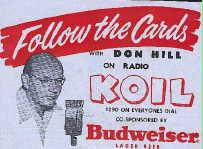
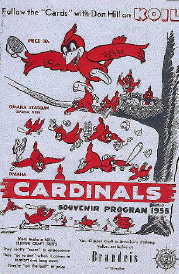
In 1959, Burden had inaugurated KOIL-FM at 96.1 in Omaha - his first step onto the FM band. Initially, the FM simply re-broadcast the AM signal. As few people had FM receivers at the time, the FM was merely there to save for future use. Quite often during this period, the morning announcer would neglect to turn on the FM transmitter, which was seldom ever noticed (except by Burden!) In 1966, like many FMs of the era, KOIL-FM began broadcasting "beautiful music" programming with a completely automated system. Burden figured the kids had the AM and adults had the FM - just the opposite of the way it eventually turned out! In the 70s the FM call letters were changed to KEFM.
In 1966, the AM transmitting towers were moved to 66th and Harrison in the southern part of Omaha. In the fall of 1968, KOIL and Star Stations corporate headquarters moved to 8901 Indian Hills Drive (just south of 90th and Dodge) in Omaha.
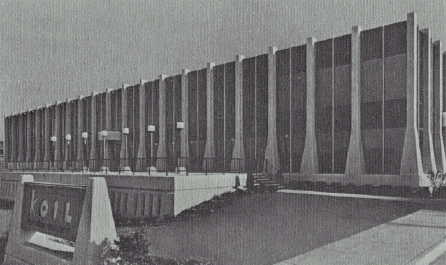

This broadcasting palace was state-of-the-art and quite an impressive building, costing $1,5 million and even winning a beautification award in 1969. The three-level building housed studios, engineering suites, sales offices, an indoor garage, and on the second floor, Star Stations national headquarters. During its heyday, it was popular to "cruise the KOIL parking lot" with hopes of seeing one of the Good Guys in person. You could walk right up to the glass-walled studios and watch the deejays in action. And some very brave souls even "streaked" KOIL during that craze in the 70s.
KOIL's promotions in the 1960s were legendary. Each Halloween, children across the metro area would ask "Is this a KOIL trick or treat house?" At Easter time, the station staged a gigantic Easter Egg Hunt.

KOIL was the bridge to the "Big Time" for numerous DJs before their careers really took off. The Mighty 1290 could brag of jocks such as Gary Owens, the future Kris Erik Stevens (as Johnny Mitchell-see above survey!), Gary Gears, even WCW Wrestling announcer "Mean Gene" Okerlund! News talents Lyle Dean and Fred Winston once shared the same facilities before their Pittsburgh and Chicago breaks came. News Director Bob Benson became ABC Radio news director. Jimmy O'Neill of TV's "Shindig" was a KOIL Good Guy, as was L.A. personality "The Real" Don Steele. KOIL deejay Mike McCormick went on to become program director at radio legend WLS in Chicago.
Steve Brown, now of KKAR in Omaha - coincidentally on 1290 after later swapping frequencies with sister station KOIL -- joined Star Stations in 1959 as an announcer and in 1960 became National Program Director for the group. Word has it that it was Brown who first introduced the Beatles and Beach Boys. For years it was Brown's deep resonant voice that was heard on many KOIL promos.
Roger W. Morgan, today heading nationally syndicated radio programs, was THE morning deejay to wake up with in the 60s. His "Morganizing" - where he phoned and played a gag on an unsuspecting person - was talked about in classrooms and around water coolers all over town.

Morgan was given the assignment of traveling to London to interview Paul McCartney during the "Paul is dead" crisis in 1969. Morgan eventually made his way to Paul's farm in Scotland where he, rightly assumed to be an intruder, was nearly picked off by a .22 caliber at the hands of one very testy Mr. McCartney!
KOIL reportedly enjoyed 30 to 40 shares in the mid 60s, with KFAB, KOOO, WOW and KBON being other significant players in Omaha. KOIL enjoyed up to a remarkable 80 or better share with teens in the evenings!

By the late 60s, KOIL's dominance faded a bit due to additional teen-oriented competition from KFNF in Shenandoah, Iowa and KRCB in neighboring Council Bluffs. When KRCB added a simulcast on KRCB-FM, the first indication of a change was in the wind for rock and roll radio's future. By the early 70s, WOW-FM became KFMX and also began catering to the younger audience.
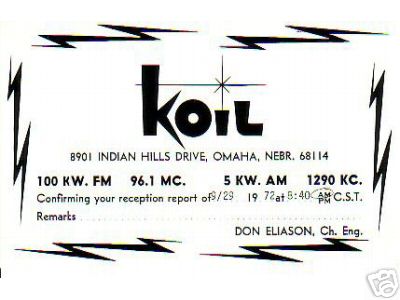

Don Burden had a reputation as an excellent broadcaster, but at the same time had earned plenty of enemies in the business. Certain parties may have helped turn him in to the FCC concerning allegations of misconduct. The case involved news coverage of a gubernatorial race in Oregon in 1966, the 1964 U.S. Senate race in Indiana, as well as alleged misconduct over a long period on other issues. The FCC said that newscasts were improperly used to publicize the campaigns of certain politicians. After investigations went on for several years, the FCC held that serious misconduct had occurred in the operations of the stations and that Burden was intimately involved in and had knowledge of the misconduct. Don Burden was forced to surrender all of his licenses. After 51 years, KOIL the Mighty 1290 went dark on September 2, 1976.
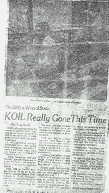 (Click to Enlarge)
(Click to Enlarge)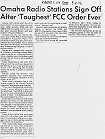
A number of KOIL air personalities surfaced on former rival KRCB. Jimmy O'Neill, Kevin Kassera, Chuck Shramek, Brian Jordan, and even former KOIL General Manager Steve Shepard drove across the river to Council Bluffs to try to resurrect the old sound, coincidentally in the city where KOIL began. KRCB even attempted to acquire the then-silent 1290 frequency (a big step up from their daytime, low-power frequency).
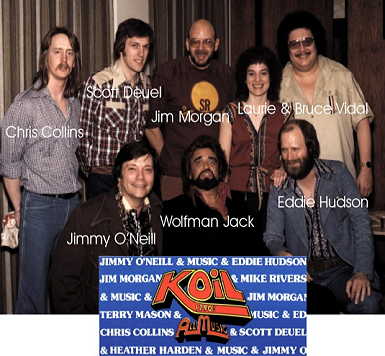
KOIL Studios, 1990 with Dave White at 1108 Douglas St
During this period, KOIL's studios moved about the city, from the Harrison Street location where the studios and transmitter shared limited space, to the Twin Tower Condominiums on Farnam, to an industrial area in northwest Omaha, and to the lower level of an architectural firm in downtown Omaha.
KOIL came to suffer the same fate as many other great local rock & roll AM stations. It has been a satellite oldies station, adult standards and all sports. KOIL is now owned by Mitchell Broadcasting, whose group of stations is operated under a local management agreement with Waitt Broadcasting. In 1993 it exchanged frequencies with another Mitchell property, talk outlet KKAR, moving to 1180AM. The move gave KKAR a better signal and changed KOIL's official city of license to Bellevue, Nebraska.
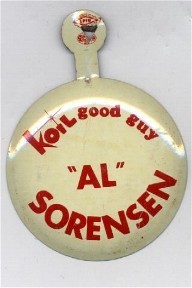
KOIL now resides at 1180 AM and is now a "Radio Disney" affiliate.
This page is meant to pay a small tribute to and maintain the memories of the radio station that eastern Nebraska and western Iowa grew up listening to --





files are best heard using RealPlayer
The Real Don Steel 1962 Perhaps KOIL's most widely known alumnus
Sandy Jackson 3/7/62 A KOIL treasure, Part One
Sandy Jackson part two
The KOIL Twist! A jingle with a, ummm, "twist". From 1962
KOIL Number One-derful! a couple of oldies
Frank Allen 1962 "Coffeehead" delivers the news
Gary Owens on how he came to leave Omaha
KOIL and the Omaha Flood ... from Hal Widsten
"Yours Truly, K-O-I-L ...another classic jingle package
KOIL and the Wrestling Announcer ...still more from Hal Widsten
Roger W. Morgan 8/20/68 Good Morgan to you!
Roger W. Morgan part two You've been "Morganized" at the grocery store!
Gary Roberts 8/20/68 and the "drive home" cast
Tom Kaye 1968 The News in the KOIL style of the times.
Mighty 1290 KOIL ...the jingle we all remember
Charlie Stone 1971 the "Voice!"
Carl Mann 6/16/73 Getting you up on a Saturday morning.
Frank Parker 6/16/73 "Bark" Parker, along with a fun ad for "Record Center"
KOIL Jingle assortment from "Rock of the Midwest", to "Solid Rock" to "Music Radio-KOIL"
News Report Omaha will find itself short two radio stations, as of tomorrow...
KOIL Signs off the final moments
Bobby Irwin, from July 1982
The Living End from January 1990, Snippets from KOIL's final overnight hours before going satellite. Featuring Action Jaxon as "Bobby Dean", Mike Cox as "Jimmy O'Neill and JAG as himself.
When the sun went down where I lived, in Washington, DC, and the AM band's skywave opened up, I would spend hours before bedtime and beyond listening to the DJ's at WABC and WNBC in New York, WFIL in Philadelphia, WRKO in Boston, and other legendary Northeast "Top 40" stations of the 1960's.
It wasn't just for the music - I was entranced by the talent these air personalities exuded, and their magnetic abilities to capture and hold listeners. Truly, the likes of Cousin Brucie and Dan Ingram were larger than life. I would study them intently, focusing on their ability to always be in total command of their airwaves. I wanted to emulate them and somehow, someday, join their ranks.
In many ways, "The Mighty 1290 KOIL" would provide an opportunity. In the late summer of 1966, when I was starting high school, dad was transferred by his employer to Omaha. I was sorry to leave the stations and air personalities I had grown up with, and had grown to envy, and didn't know what to expect in my new locale. I came to Omaha, though, armed with a bit of sage advice I was given on the request line at a DC station. The DJ knew that I was enamored with "the business," and told me that by moving to a smaller city, I had a better chance to pester my way into someday getting my foot in some radio station's door for that "first break." He told me that big time DJ's start out in such places.
The morning after we arrived in Omaha, I sat in the car and tuned the radio from one end to the other to see if anything was out there. When the dial pointer landed on 1290, I pulled out a radio pushbutton and set it to KOIL. It sounded bigger and better than I had expected to find! After sundown, I also found WLS and WCFL in Chicago, and Storz' KOMA in Oklahoma City.
KOIL became a constant part of my life. I carried a transistor radio with me nearly everywhere, and wore out several batteries a week because it was always on. Even at night, when the skywave was "hot," I'd still keep going to KOIL to catch the tunes and the air talents. The station was inseparable to me.
As was true for many stations of that time, there was quite a range in KOIL's on-air persona depending on the daypart. I remember hearing the mid-morning "Grocery Boy" show with Frank "Coffeehead" Allen, and his quaint contest to win a sack of food from IGA. It could have been the 1950's in mid-town America during that daypart. Yet, come 4 or 5 in the afternoon, KOIL was rocking along with an up-front high energy presentation, and stayed that way well into the night.
I well remember the studios at Aquila Court. I went there numerous times begging for promotional goodies and hoping to see station personalities. One at a time, I was fortunate to meet most of them. The 1968 move to 8901 Indian Hills Drive, however, brought me and my ambitions into the picture.
I went to Westside High School, so it was easy to hitchhike up 90th Street after class to the new facility and be awestruck by it all. The outside glass-front air studio was where I stood day after day, looking in and wanting so much to be there. I would again beg for any promotional items, more for the chance to be inside the building than anything else. I wanted to be in the business, and hoped that KOIL could be a stepping stone.
I went to Westside with Don Burden's daughters, Tracy and Wendy, and gave some thought to the idea of trying to strike up a friendship with one of them in order to be around their house to hopefully pester Don for a job. Unfortunately, I didn't have the nerve then to pull off such a scheme. Sure thought about it, though.
Of course I was a pest on the request line! How else was I supposed to try to get to know the "boss jocks" and hopefully get in? I made my name and voice known to the afternoon, evening, and night guys, along with my aspirations. Some let me come by after the close of business hours. That was in the spring of 1968.
I was excited to be inside the building. I'd never seen a station facility so modern and bright, looking totally "big time." All of the equipment looked beautiful to me. The on-air studio looked absolutely sleek, with what seemed to be a real "aura" of "this station is for real" about it. I remember the FM's "IGM" Automation System, with huge carousels that held carts and racks of open-reel decks for the tapes that made up the "beautiful music" presentation. The IGM system ran on a now-antique pegboard panel, with pegs inserted at specific hours and minutes to trigger "breaks" and fire the proper jingles, bumpers, and the spots in that cluster. I can also still picture Mike Alabaugh's newsroom, and the staff lounge.
I learned how much fun the glass studio wall could be when a couple of teenaged girls came by one night and showed off their knickers through the glass. I recognized one of them from school! I discovered for myself over time and numerous visits that there were lots of such incidents, some gamier than others.
KOIL's air sound during that time was equally impressive - the combination of the music of then, and the air talent's presentations wasa "Top-40" classic. Every one of the jocks was clearly a guy on his way up to a major market, as the alumni rolls clearly bear out. I later worked with some of them in those markets. Also, I had made a trip to Los Angeles in the summer of 1967, and discovered that KOIL's "Mighty 1290 KOIL" and KHJ's "93 KHJ" jingles were the same!
The station's outside promotions were well carried off. The Teen and Bridal fairs were sharp moneymakers for Don Burden, drawing substantial crowds. They were also a lot of fun to go to. There was even a bit of silliness along the way. Remember "The Big Kahuna?" that went on for a few months, starring one of the weekend jocks, a friend of mine, dressed up as a Polynesian Chieftan and paraded about town. The jock was one of the guys who would let me come down to the station during his airshift.
One "on air" opportunity did come my way on KOIL. During the later evenings, in'68 and 69, there was teen-focused talk show called the "Under 40 Forum." The jock would toss out a question or an issue, and people would call in and voice their opinions. The DJ had come to know me from my station visits and the request line, and told me privately to use the "Forum" as a chance to learn how to speak well on the air. Thanks to him, I became a regular on the show and picked up a few minutes of air time night after night. Sure, it wasn't the same as being a "boss jock," but it helped get started on honing my act. The next step came not at KOIL, but across the river in Council Bluffs.
When 15-6 KRCB turned up the rock and roll in the later sixties, I set another pushbutton for that station. It also provided me with a second set of DJ's to call and visit, and get to know. This time, it paid off.
In early 69, the evening jock, Danny O'Shea (Phil Sonksen) started letting me come by night after night to literally camp out at the station. I'd answer the phones, grab his records, and do the usual "gofer" drill. Danny, wanting to do things such as take a leisurely bathroom break, started teaching me the control board, the cart machines, and how to properly slip-cue a record. While I did the show's mechanics, he did his "duty" or whatever.
After a few months, I started doing "couch time fill" for some of the KRCB jocks. They'd hit the couch for a half hour or so while I would spin records, play jingles and spots, and keep the station going without hitting the mic. They didn't always hit the couch alone, either. That's another part of my "broadcast education." I had already learned during my nights hanging around at KOIL that there was lots of "fishing" on the request line. What made it tough at "the Mighty 1290" was that fishbowl air studio. Outsiders could see what you were doing.
Not so at KRCB. It was in the basement of a run down frame house on a side street in Council Bluffs. Things could "happen" there much more discreetly, and did. Upstairs in that frame house lived a middle-aged divorced lady who liked to drink. .I'd been warned by friends on the staff that she sometimes dropped downstairs to offer hospitality. KRCB was a lot more "downscale" than KOIL, and things happened there that usually didn't at KOIL except under very cautious conditions. When one went "request line fishing," the quarry could be invited over after hours without much looking over one's shoulder. It was, in all, quite an education for me. I was only 16.
Later in 1969, I was offered my first air shift. It was Sunday night / Monday morning from Midnight to 5am. Someone else's alcohol problem opened up this opportunity. It took a good bit of negotiation and nagging to get my parents to let me stay up all night on a "school night," but they knew how much I wanted this.
The first night, one of the jocks was there with me for the first hour or so. I still remember seeing him walk out of the air studio to exit the station, leaving me in the place entirely and completely alone. That's when fear set in. I managed to get words out of my mouth somehow, but I seriously doubt if more than 50 people heard me during that absolutely dead time of the night. A blessing, perhaps, for all involved.
I didn't get to do every early Monday shift, but I did my share of them over the next year or so. I'd do other shifts when needed, and spent a lot of off-air time just keeping my face in front of the Program Director. Just paying my dues.
The KRCB jingles and other imaging elements still reverb in the back of my head today. They were nowhere as slick as KOIL's imaging, which I now know came from the same package that RKO used at KHJ and elsewhere in the chain. Don Burden was smart to spend money to make KOIL sound major market.
It was at KRCB that I first developed "Jeff's Inverse Law of Phone." That is, the better callers sound on the request line phone, the bigger or worse they usually are in person. I developed this "the hard way" with a string of embarrassing discoveries. Every jock has made the same uncomfortable journey, for sure.
At the end of the 60's, the Top-40 of KOIL and KRCB was joined by Omaha's hippie "underground" station, KOWH-FM. As a teenager of that era, I grew rather enamored with KOWH and its staff. The music ranged from Hendrix and MC 5 to "out there" jazz. The on-air persona was "buzzed." The station was a counterculture icon to those who knew it. This was Omaha. Brilliant!
I graduated from Westside in 1970. That was the end of my time in Omaha. I left that summer for Miami, and didn't come back for 30 years.
In Miami I jocked at stations much like KOWH called "The Magic Bus and Zeta-4." I was on my way.
My career morphed from jocking to news as I moved from Miami to California to Detroit, where in 1980 I was offered but didn't take the morning drive news slot with Doctor Don Rose at KFRC/San Francisco. A year later, I went to New York and anchor / correspondent positions at the networks. Bob Benson was my boss at ABC News. A decade later, at UPI, I worked with Mike Alabaugh.
Today, on the air at Voice of America, I rattle radios from Belfast to Bangkok. It's a far cry from the Top-40 radio of my youth, but the skills picked up then and farther along the way are key to what I can do today.
It all started with that tube radio, and became reality in good part to KOIL. I am so in debt to all those guys who put up with me and my drive to join them.



Here are but a few of the names from the history of KOIL
Ron Abernathy Bill Addison Mike Allabaugh 66-69 Frank (Coffeehead) Allen - early 60's Laurie Allen '77 Mark Allen '83-84 Paul Oscar Anderson mid 60's Brian Barks Bob Benson mid 60's Drew Bentley '83 Charles Blair Mike Bradley MD late 50's ~ early 60's Lyle Bremser early 50's Steve Brown mid 60's ~ 70's Brucie (Kevin Kucera) early 70's Don Burden 50's-70's Scott Carpenter early 70's Ralph Carey late 40's-early 50's Todd Chase mid 60's Jeff Claybaugh 86-89 Chris Collins '80's Dave Conley 90's Dawn 90's Roger Davis '79 Joe Dawson 88-89 Bob Dean 73-76 Lyle Dean mid 60's Scott Deuel late 70's Dave Diamond '61 John Ehrling 76-77 Jimmy Fox 70's Joe Francis 80-82 Charles Frandsen 50's Gary Fries 76-77 Gary Gears mid 60's Bruce Haines mid '60's Frank Hall Heather Harden late 70's Byron Head 40's John M Henry 30's Mark Hiatt '80 Hugh Higgins 30's-40's Charles Hoffman '66-67 Sam Holman 60's Marvin Houtz 60's Eddie Hudson 77-79 Ralph Hull Jim Hunter (Hal Widsten) 64-67 Bobby Irwin '82-'85 Sandy Jackson 60's JAG (John Greenleaf) '89 Paul James '83-84 Gary Java 90's Clifford Johnson 30's-40's Dean Johnson '68-69 John Kamen Tom Kaye late 60's Jim Kelter L J Lancer (Irving Nathan) Spanky Lane early 70's Ed Larsen '77 - 82 Jeff Larsen Gary Lee 90's Joe Light early 60's J.M. Lowman 30's-40's Steve Lundy 70's Gary Mack (now Mean Gene Okerland) mid 60's Randy "Scott" Malick 80's Carl Mann 72-76 Terry Mason 78-89 Bill Mattson 86-90 Mike McCormick (James Hankins) 60's G. Michael McKay 70's J. Michael McKoy '80-82 Jeff McKee '68 John Menzies 80's Rod Meyer 80's Clay Michaels 80's Mike Miller 67-68 Johnny Mitchell mid 60's Larry Moffitt J.J. Morgan late 70's & late 80s Jim Morgan Roger W. Morgan (Jim Hunter) 60's Rod Myers '82 Anthony Myles '82 Neil Nelkin *Bill Newens 40's-50's Dale Nixon 66-69 Bobby Noonan '68 Nathan Novak (Owner-mid 70's) Kevin O'Day Jimmy O'Neill '68 (was host of TV's "SHINDIG") Roger Olson 80's Gary Owens mid 50's (Announcer on TV's "Laugh in") Bob Palmer 90's Frank Parker 73 Frank Pellegrin 30's-40's Tim Peters 79-81 Byron Reda Grahame "Crackers" Richards Mike Rivers late 70's Gary Roberts '68 Phil Rooney '82-88 Donald Rosenberg (later-Dr Don Rose) early 60's Gwen Sachs mid 40's Dick Saint Buddy Scott (Mike Bothel) '69 Virgil Sharpe 40's-50's Blue" Gene Shaw 72-76 Rick Shaw Greg Shea mid 90's Steve Shepard 60's Tom Simmons 70's John Steel '67 The Real" Don Steele '62 Rick Stewart Bill Stevens '70s Kris Erik Stevens (as Johnny Mitchell) mid 60's Patrick Stibbs early 80's Charley Stone 70's Charley T Stone early 70's Charles Stuart 40's-50's Mac Swain Don Tawzer late 60's Kent Thompson 90's Ron "Ugly" Thompson 70-71 Dean Todd 81-84 Johnny Troy Dan (Dale) Tucker '65-66 Tommy Tucker (Bill Frye) 90's Bruce Vidal late 70's Laurie Vidal late 70's Scott Voorhees Arthur J. Weaver mid 40's Jerry Weist Bill Western Dave White 89-90 Hal Widsten 64-67 Ray Willes Guy Williams '65 Victor Williams 40's Bob Wilson mid 50's-mid 60's Fred Winston mid 60's Michael Wold-Steele 90's Pat Woodard 70's Scotty Wright 60's Bill Young (Bill Western) ' 60
|
|
 |
||
| "The Real" Don Steele |
Kris Erik Stevens as Johnnie Mitchell |
Gary Owens | Dr Don Rose Don Rosenberg |
 |
 |
 |
|
| Frank Allen | Joe Light | Tom Mix | Steve Brown |
 |
 |
||
| Charlie T. Stone | G. Michael McKay | Roger W. Morgan | Scott Carpenter |
 |
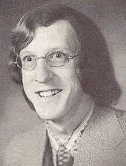 |
||
| Bob Wilson | Paul Oscar Anderson | Jimmy Foxx | Brucie |
 |
 |
||
| Lyle Dean | Jonathan Christie | Ray Willes | Rick Stewart |
|
|
 |
||
| Charles Blair | Carl Mann | Johnny Troy | Bill Addison |
|
|
 |
 |
 |
| Bill Stevens | Fred Winston | Bill Western | Gary Gears |
|
|
 |
||
| Ed Hepp | Dave Diamond | Sandy Jackson | Todd Chase |
 |
 |
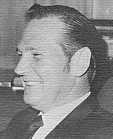 |
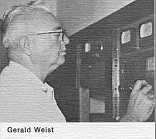 |
| Gary Roberts | Buddy Scott | Don Burden | Gerald Weist |
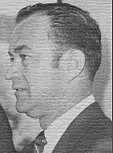 |
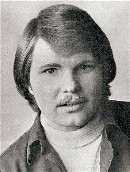 |
|
|
| Don Tawzer | Bobby Irwin |
We don't have all their names, so we'd appreciate any help in identifying these Omaha radio personalities!
|
|
||
| Ralph Carey | Henry Kelpe | Bob Steelman |
|
|
||
| _?_ West | ? | ? |
| Byron L. Head (circa 1944) |